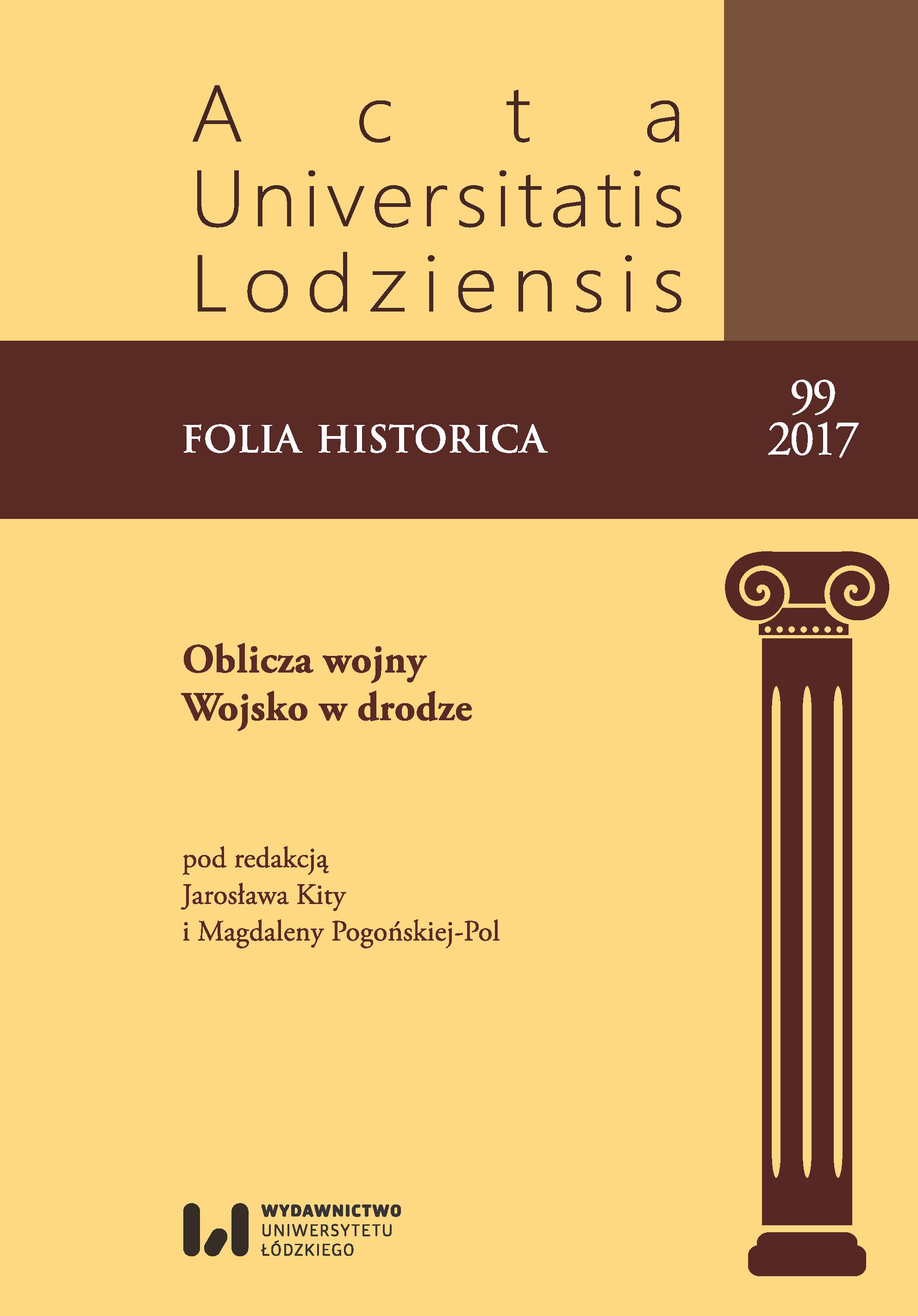Miejskie wozy wojenne z ziem łęczyckiej i sieradzkiej w składzie armii Królestwa Polskiego w XVI–XVII wieku
Towns war wagons from lands of Łęczyca and Sieradz in the army of Polish Kingdom in the 16th–17th centuries
Author(s): Jędrzej Tomasz KałużnySubject(s): Military history
Published by: Wydawnictwo Uniwersytetu Łódzkiego
Keywords: war wagon; escort; royal towns; war duties; records of treasury wagons; royal lustration; wóz wojenny; eskorta; miasta królewskie; powinności wojenne; rejestry wozów skarbnych
Summary/Abstract: The army’s accompanying tabors, which consisted of war wagons, provided transportation support to the army. The war wagons most often had specific equipment: food, technical equipment, escort, service, and horses. The war wagons were provided by private individuals as well as by urban centers. The obligation to send war vehicles through towns and royal towns is one of the longest-lasting war duties. Difficult situations of the city, wars, fires or other difficulties could lead to the release, temporary suspension, or replacement of the duty of war wagon, to another. The most common source terms for the war wagons were: currus, vehiculum and plaustrum. In the former Poland, these wagons were called skarbnymi and sometimes picznymi when the vast majority of the load was fodder and food. In modern literature, the most commonly used term is „wóz wojenny” – „war wagon”. War wagons underwent a numerous of transformations, and in time they gained a special reinforced skeleton and sides, and they were also used to fight in tabor formations and as protection of the camp. Many detailed information on this issue are provided by the records of treasury wagons and royal lustration. The wagons from the Sieradz and Łęczyca lands constituted a significant contribution to the total number of wagons from the royal cities of Poland. // Tabory towarzyszące armii w dawnych wiekach składały się z wozów wojennych, które stanowiły wsparcie transportowe wojska. Wozy te najczęściej miały ściśle określone wyposażenie: żywność, sprzęt techniczny, eskortę, obsługę oraz konie. Wystawiane były zarówno przez osoby prywatne, jak i przez ośrodki miejskie. Obowiązek wyprawiania wozów wojennych przez miasta i miasteczka królewskie jest jedną z najdłużej utrzymujących się powinności wojennych. Trudna sytuacja miasta, wojny, pożar czy inne trudności mogły doprowadzić do zwolnienia, czasowego zawieszenia lub zamiany powinności wyprawiania wozu na inną. Najczęściej pojawiającymi się źródłowymi terminami opisującymi wóz były: currus, vehiculum oraz plaustrum. W dawnej Polsce wozy te nazywano „skarbnymi”, a czasem „picznymi” – gdy znaczną, przeważającą część ładunku stanowiły pasza i żywność. We współczesnej literaturze najczęściej stosowanym terminem jest „wóz wojenny”. Wozy wojenne podlegały licznym przemianom, z czasem zyskały specjalny, wzmocniony szkielet i burty, stosowane były również do walki w taborach i osłony obozu. Wielu szczegółowych informacji w tej kwestii dostarczają nam rejestry wozów skarbnych oraz lustracje dóbr królewskich. Wozy z ziem sieradzkiej i łęczyckiej stanowiły znaczny procent ogółu wozów wyprawianych z miast królewskich całej Polski.
Journal: Acta Universitatis Lodziensis. Folia Historica
- Issue Year: 2017
- Issue No: 99
- Page Range: 125-147
- Page Count: 23
- Language: Polish

